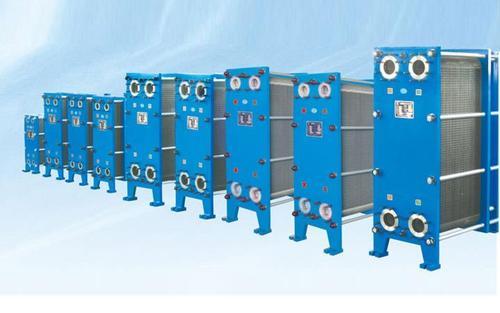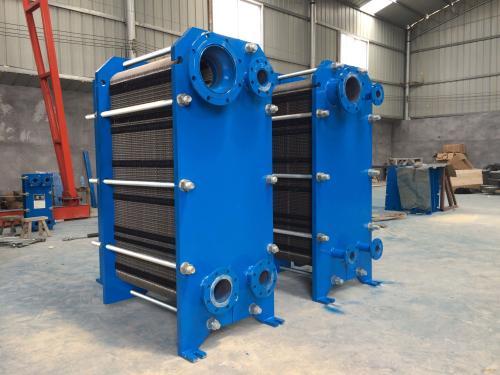What is the shell heat exchanger? Introduction to the principle and type of shell heat exchanger
Release time:
2024-07-25
Shell heat exchanger, also known as tube heat exchanger, is enclosed in the shell tube bundle wall as the heat transfer surface of the heat exchanger. This kind of heat exchanger is simple in structure, reliable in operation, can be made of various structural materials (mainly metal materials), can be used under high temperature and high pressure, and is currently the most widely used type. The shell heat exchanger is composed of shell, heat transfer tube bundle, tube sheet, baffle plate (baffle) and tube box. The shell is mostly cylindrical, with a tube bundle inside, and the two ends of the tube bundle are fixed on the tube plate.
In our production and life, the heat exchanger I believe you will not feel strange, and in our many types of heat exchangers, the application of shell heat exchanger is very extensive, and today I want to introduce to you some of the working principles and classification of our shell heat exchanger, I hope you can refer to understand.
Shell heat exchanger, also known as tube heat exchanger, is enclosed in the shell tube bundle wall as the heat transfer surface of the heat exchanger. This kind of heat exchanger is simple in structure, reliable in operation, can be made of various structural materials (mainly metal materials), can be used under high temperature and high pressure, and is currently the most widely used type. The shell heat exchanger is composed of shell, heat transfer tube bundle, tube sheet, baffle plate (baffle) and tube box. The shell is mostly cylindrical, with a tube bundle inside, and the two ends of the tube bundle are fixed on the tube plate.
The working principle of shell heat exchanger is mainly composed of head, shell, tube bundle, flange and other components. One kind of working medium enters the heat transfer tube through the inlet nozzle at the head end, and its process can realize the structure of one tube pass, two tube passes and four tube passes according to the process requirements; The other kind of working medium enters the shell from the inlet nozzle at one end of the shell and is evenly distributed outside the heat transfer tube, and its flow state can be provided with different types and numbers of baffles in the tube bundle according to the process requirements. As a heat transfer element-heat exchange tube, brass tube, copper finned tube and steel pipe can be used according to the process requirements, so as to ensure that different physical properties and different temperatures of the working fluid in the heat exchanger to achieve heat exchange, cooling or heating purposes.
Fixed tube-plate heat exchanger The tube plates at both ends of the tube bundle of the fixed tube-plate heat exchanger are integrated with the shell, and the structure is simple, but it is only suitable for heat exchange operations when the temperature difference between cold and hot fluids is not large, and the shell side does not need mechanical cleaning. When the temperature difference is slightly larger and the shell side pressure is not too high, an elastic compensation ring can be installed on the shell to reduce the thermal stress. Shell heat exchanger because the temperature of the fluid inside and outside the tube is different, because the heat exchanger shell and tube bundle temperature is also different. If the two temperatures are very different, a large thermal stress will be generated in the heat exchanger, causing the tube to bend, break, or pull off the tube sheet.
Vortex hot film heat exchanger Vortex hot film heat exchanger adopts the latest vortex hot film heat transfer technology, which increases the heat transfer effect by changing the fluid motion state. When the medium passes through the surface of the vortex tube, the surface of the tube will be washed strongly, thereby improving Heat exchange efficiency. Up to 10000W/m2 ℃. At the same time, this structure realizes the functions of corrosion resistance, high temperature resistance, high pressure resistance and anti-scaling. The fluid channel of other types of heat exchangers is in the form of fixed direction flow, which forms a winding flow on the surface of the heat exchange tube, and the convective heat transfer coefficient is reduced.
The above is to introduce some of the working principles of the shell heat exchanger and some of its different types of introduction, I hope you can refer to understand, when we need to buy the use of heat exchanger in the future, the first thing to do is to choose a suitable heat exchanger to use according to our actual situation, which can achieve the best effect
Latest News









